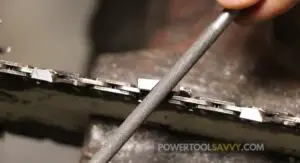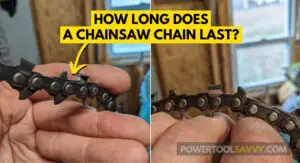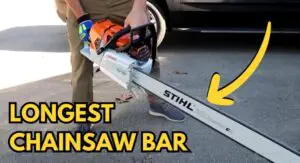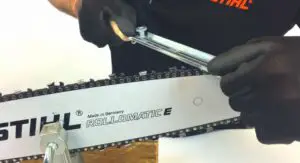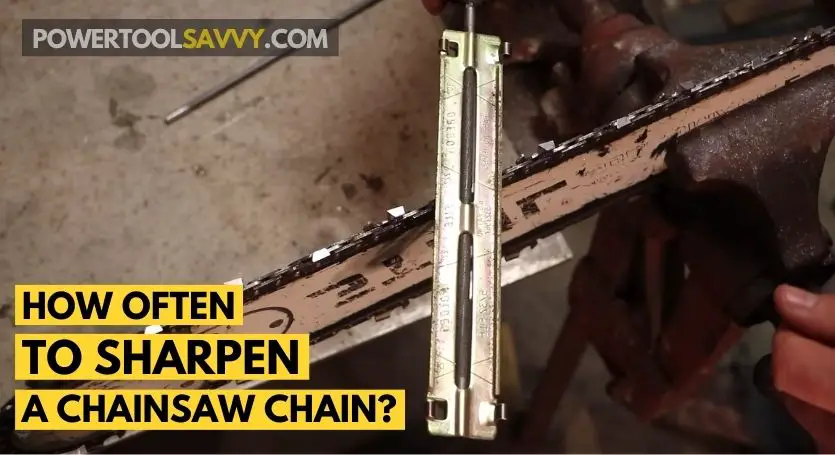
Let’s face it!
Keeping a chainsaw chain SHARP is the key to productive and safe cutting!
A dull chain will not only make your life harder but also increase the chances of kickbacks and SERIOUS injuries.
So, how often to sharpen a chainsaw chain?
On average, you should sharpen your chainsaw chain after every tankful of fuel or every 2-3 hours of continuous cutting. However, if you’re dealing with dirty, rocky wood, or if your chain encounters something hard, you might find yourself sharpening it more often.
Btw, I’m Samuel Anali and I have 20+ years of experience in chainsaw sharpening 😎. And in this article, I’m going to discuss – 👇
- Factors that can affect the sharpening frequency,
- How do you know if your chainsaw needs sharpening, and
- The entire process of sharpening a chainsaw chain.
So, let’s get started!
Table of Contents
ToggleFactors Affecting How Often to Sharpen a Chainsaw
Here’s the truth: 👇
There’s no FIXED answer as to how often one should sharpen his chainsaw chain. If you ask five different folks, you’re likely to get five different responses!
I even asked our Facebook group members, and their answers ranged from “after every hour of use” to “once a year.“
Long story short, there’s NO CORRECT answer here!
It largely depends on 3 factors –
1. The Type of Wood You Cut
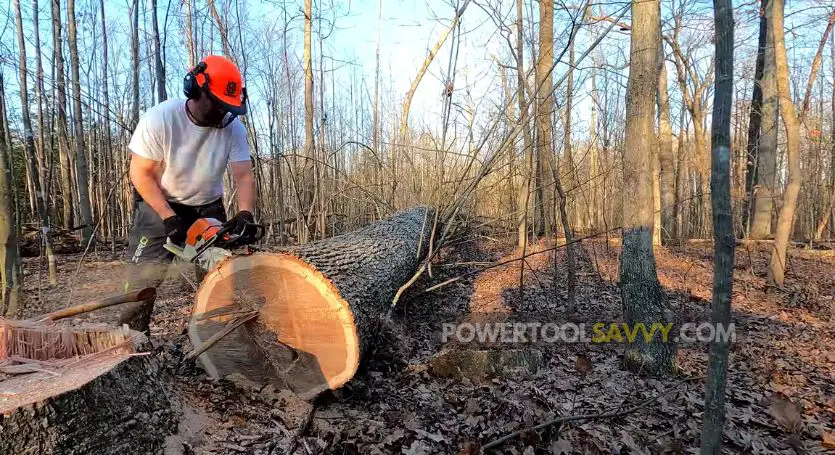
The type of wood you mostly cut has a BIG impact on how often you should sharpen your chainsaw chain.
For example – 👇
Softer woods like pine, fir, redwood, and spruce tend to have a gentler effect on the chain’s sharpness, causing it to dull at a slower rate.
On the other hand, hardwoods like oak, walnut, or maple are much harder. Their dense fiber structure is much tougher, leading to a quicker dulling of your chain.
Meet Bilea (one of our Facebook group members), who deals with a lot of hardwoods. As a result, he finds himself giving his chain a touch-up approximately every hour of cutting. (Not surprising at all!)

In contrast, Tom manages to stretch his chain’s sharpness for up to 2 tankfuls of fuel before needing to sharpen it again.

2. The Amount of Work You Put onto Your Chainsaw
It’s quite OBVIOUS!
The more work you put onto chainsaw, the faster the chain will lose it’s sharpness.
If you use your chainsaw regularly, expect to sharpen your chain more frequently than someone who uses it sparingly.
For instance – 👇
A professional woodcutter, who works 5-6 days a week, 6-9 hours a day, will definitely need to sharpen his chain more often than a homeowner who uses his saw only on the weekends.
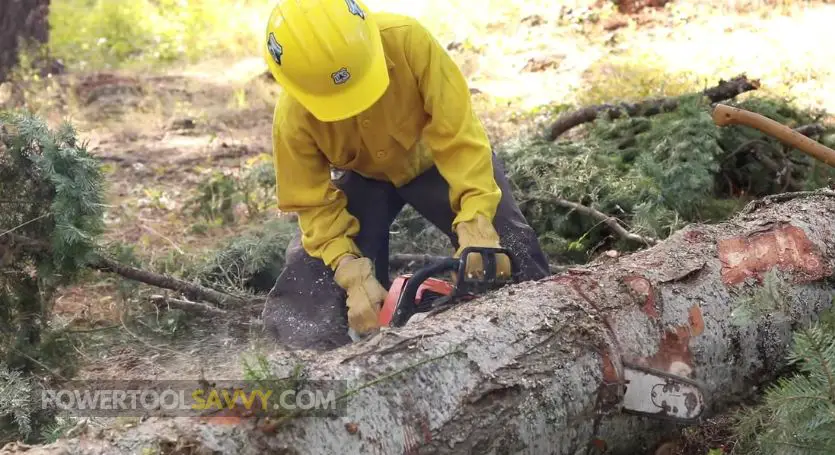
Got it??
Let’s move on to the NEXT one!
3. Hitting the Dirt
“How often one should sharpen his chainsaw?”

Yup! Travis is RIGHT!
Dirt is abrasive. It contains tiny, hard particles (like sand, rocks, and gravel). When these particles come into contact with your chain, they act like miniature sandpaper, swiftly wearing down the teeth.
I’m not exaggerating at all!
It takes only a single pass through the dirt to dull the chain.
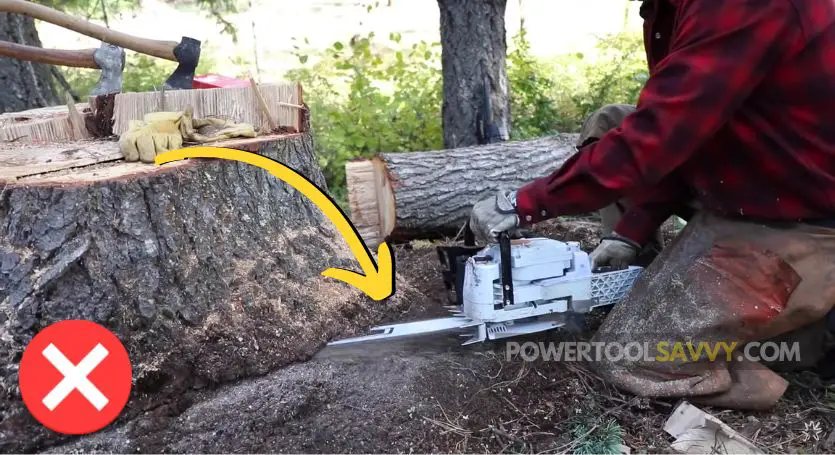
So, depending on how often your saw comes in contact with dirt, you might need to sharpen your chain more frequently than the average!
If you want to learn more, check this article out where I’ve explained it in a lot more detail – Does dirt dull a chainsaw chain?
4. Hitting Hard Objects
Chainsaws are built for woodwork.
Those cutting teeth are all about slicing through logs with precision. 🪓
But the moment you go hitting hard stuff like rocks, concrete, or metal, those cutting teeth can take a beating, bending out of shape and losing their edge in the process.
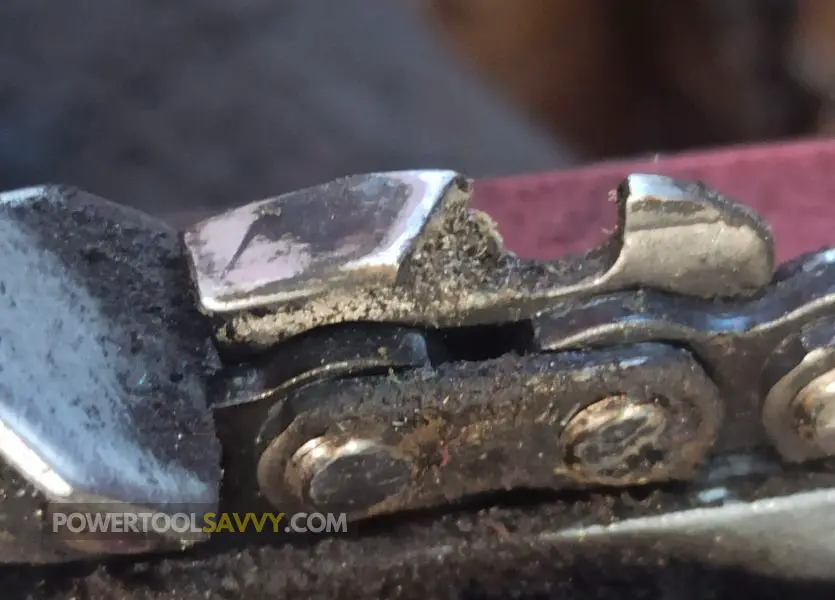
Plus, if you’re sawing through wood that’s got nails or spikes hiding in it, your chain will endure excessive wear and tear and require more frequent sharpening than your usual routine!
Sometimes, slamming into these tough materials might even result in your chain giving up the ghost and breaking.
If that unfortunate event does occur, you’re in for a full chain replacement!
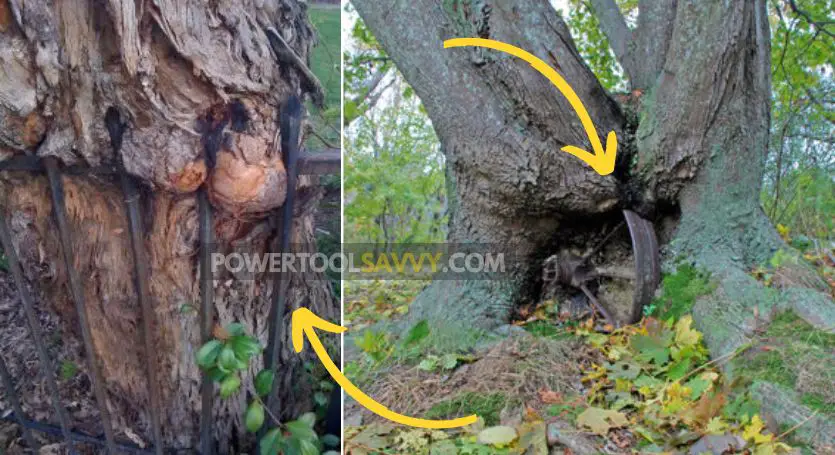
(There’re chains like carbide-tipped ones that can resist the impact of hard objects better. Check this out to learn more: Are Carbide Chains Worth It?)
5. The Type of Cutter On Your Chain
Yep, that’s RIGHT!
The type of cutter on your chain can also influence how frequently you’ll need to sharpen it.
Chainsaw chains come with mainly 3 cutter types – 👇
- Low-profile: A common cutter style on consumer saws. Easier to file or grind. But doesn’t stay sharp as long.
- Semi-chisel: Semi-chisel chain cuts slower in abrasive cutting conditions but stays sharp longer.
- Full-chisel: Full-chisel chain cuts faster than semi-chisels but dulls quickly in abrasive cutting conditions. Easier to file.

As you can see, the type of cutter on your chain can either extend or shorten the time between sharpenings.
For instance, a semi-chisel chain generally demands less frequent sharpening compared to a low-profile or full-chisel chain.
6. How Good You're at Sharpening
Sharpening a chainsaw chain is an art.
To achieve top-notch results, you’ve got to be skilled at it.
If you don’t get it right, your cutting performance will take a hit, and you’ll find yourself filing away repeatedly. (And let’s be honest, none of us want that, right?)
On top of it, if you skip maintenance sharpening between sessions, you’ll end up investing even more time in the sharpening process.

I always carry a stump vise with me which allows me to touch up my chain anytime, anywhere! 😎
It’s a fantastic way to keep your chainsaw operating at its best, ensuring efficient cuts and reducing the frequency of sharpening.
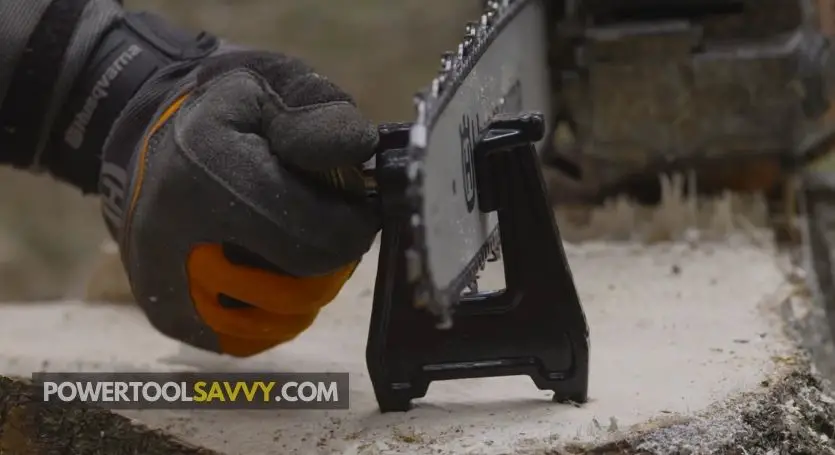
(I’ll show you how to file a chain the easiest way later in this article. So, stay tuned!)
4 Signs that Your Chain Needs to Be Sharpened
If you want to keep your saw running smoothly and efficiently, it’s important to know when it needs to be sharpened.
Here are 4 telltale signs that your chainsaw is dull and needs sharpening:
1. Your Saw Produces Powdery Sawdust Instead of Wood Chips
If I were to rank the signs of a dull chain, this one would definitely take the top spot!
Let me explain:
The cutters on a chainsaw chain are designed to bite into the wood and produce chunky wood chips. (Here’s what I mean: 👇)

But unfortunately, as the chain wears out, it loses its capacity to produce those gorgeous wood chips. Instead, it begins expelling a large quantity of powdery sawdust.
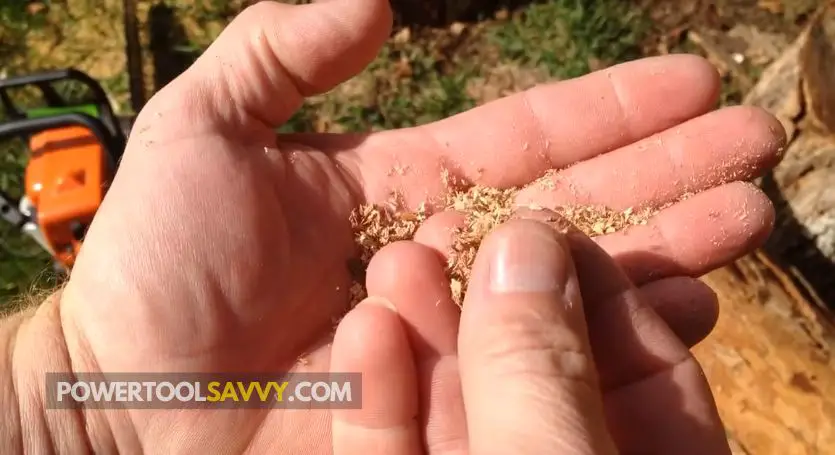
So, check the sawdust coming out of your chainsaw.
If it’s more powdery than chunky, your chain is probably dull and needs to be sharpened.
2. Your Saw Doesn't Pull Itself Into the Wood
When you’ve got a sharp chain on your saw, it practically glides into the wood on its own. You just need to steer it.
But when that chain loses its edge and goes dull, it won’t have that self-feeding magic anymore. Instead, you’ll find yourself applying more force to make it cut.
And sometimes, no matter how hard you push, your saw just won’t budge on its own! 😩
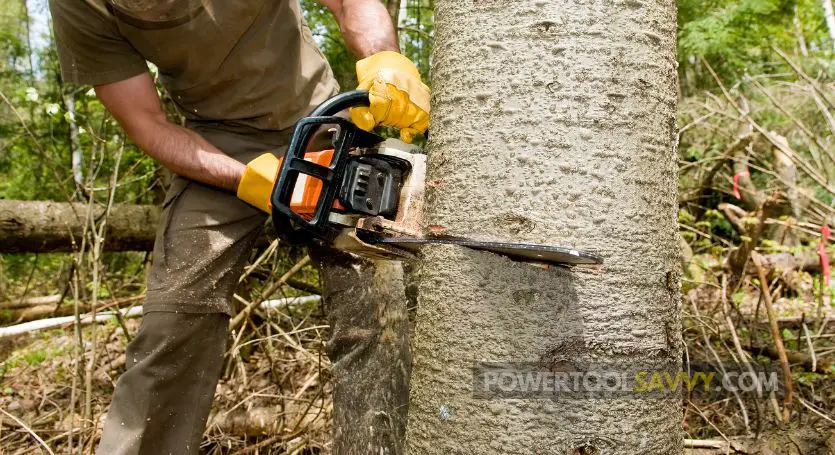
Here’s what one of our fellow Redditors had to share:

Sounds familiar??
It’s probably time to sharpen your chain! (Read More: Why Won’t My Chainsaw Cut?)
3. Your Saw Cuts Crooked
When your chain goes dull, you’ll notice that your saw has a tough time maintaining a straight cutting line.
This occurs when the teeth on one side of the chain are duller than on the other side. As a result, the sharper side tugs the saw in a particular direction, leading to uneven cuts. 😕
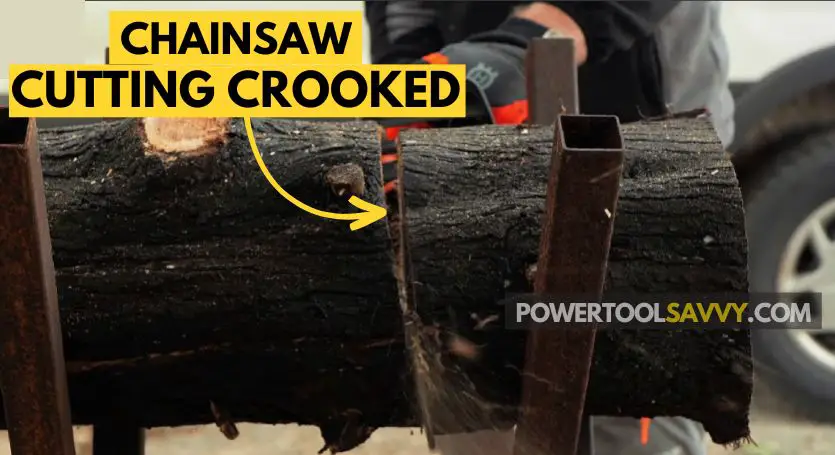
So, if you’re having a hard time cutting in a straight line, take a look at your chain. If it’s dull, you know what to do!
Related Article: 👇
4. Your Chainsaw Starts to Smoke when Cutting
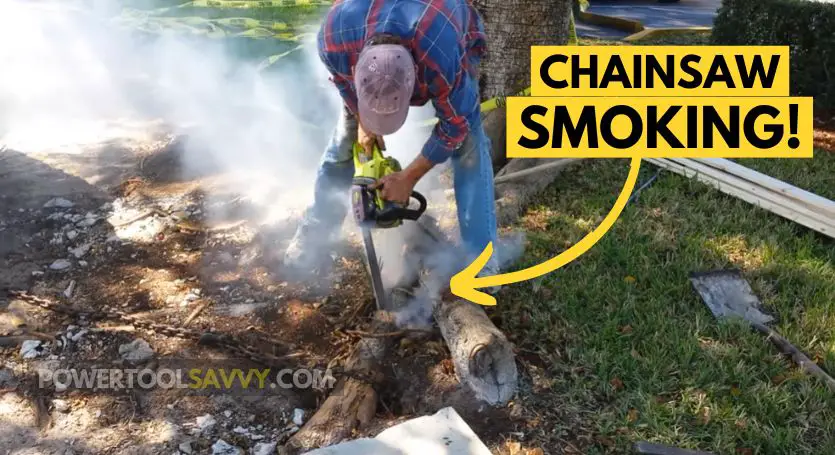
When a chain gets REALLY dull, it starts to heat up and produce smoke as you cut.
Why?
Well, it’s because the chain is dull and it isn’t making clean cuts into the wood anymore. Instead, it’s rubbing against the wood, causing a ton of friction, heat and smoke.
So, if your saw starts puffing out smoke while cutting, it’s time for some sharpening! 🔥🌲
✍️ Note: If your saw produces smoke when starting or idling, that must be a different issue. Check this article out to learn more: Why is My Chainsaw Smoking?
How Do You File a Chainsaw Chain?
If you’re new to chainsawing, or don’t know how to file a chain, it can be a bit intimidating.
But don’t worry!
I’ll walk you through the process step-by-step.
Tools You'll Need
Luckily, filing a chain doesn’t require any special tools. All you need is – 👇
- a round file,
- a flat file,
- a vise, and
- a depth gauge.
If you’re in a rush or don’t have all the tools on this list at the moment, a round file is all you need to get the job done.
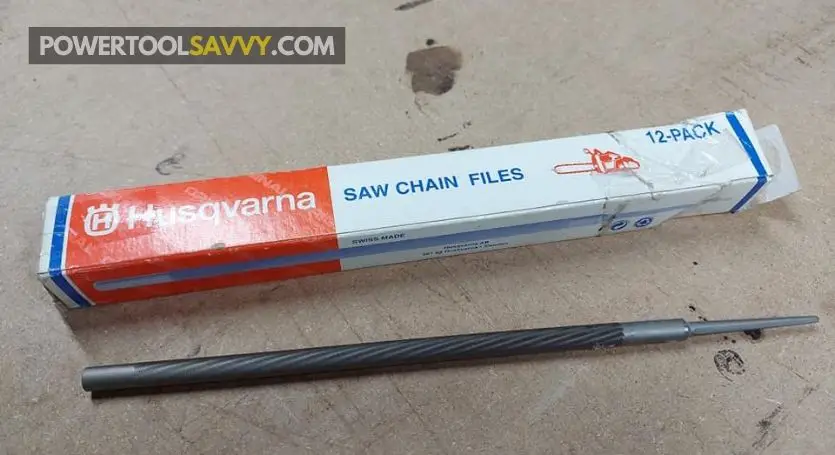
🔴ATTENTION: Keep in mind that the size of the round file you’ll need varies depending on your chain’s size (particularly its pitch).
Refer to the table below for the recommended sizes – 👇
| Chain Pitch | Round File Diameter |
|---|---|
| 1/4" | 4.4 mm |
| .325" | 4.8 mm |
| 3/8" | 5.2 mm |
| .404" | 5.5 mm |
Step-by-Step Guide
Now that you have all the necessary tools, let’s get started!
Step 1: Tighten and secure the chain first. A slack or lose chain is difficult to file correctly. (here’s how to tighten a saw chain!)
Step 2: Place the chainsaw on a flat table and secure it using a vice. This will help keep the saw stable and prevent any accidental movement during the process.

Step 3: Place the round file in the first tooth of the chain. Most quality chains have a mark on the teeth that indicate the angle at which you’re supposed to hold the file. (If your chain has no marks, a file guide would come handy!)
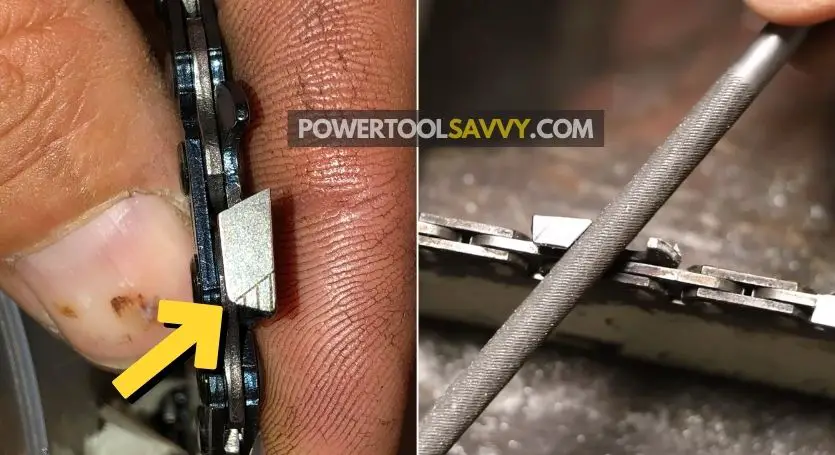
Step 4: Now, hold the file with both your hands at the right angle (90°) and file the tooth away from you with light strokes. (The file only sharpens on the forward stroke. So, push the file away from you, while reducing the pressure on the return stroke!)
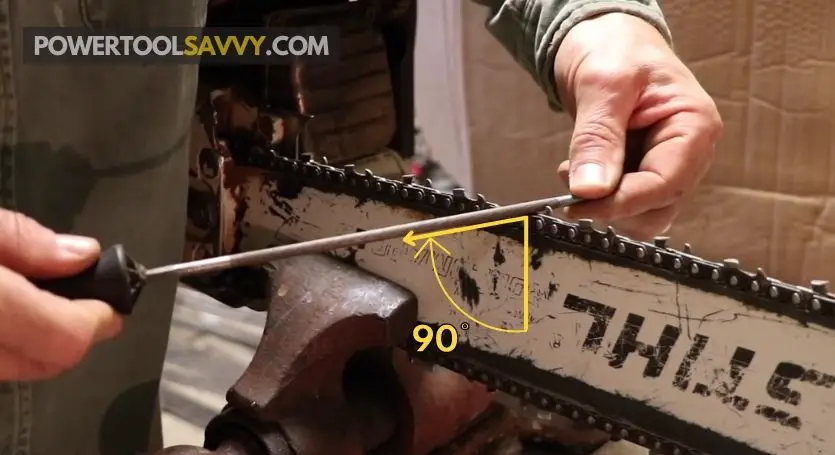
Step 5: File all the teeth on one side of the chain, then turn the bar by 180° and repeat the process for the other side. Make sure all the teeth are of equal length.
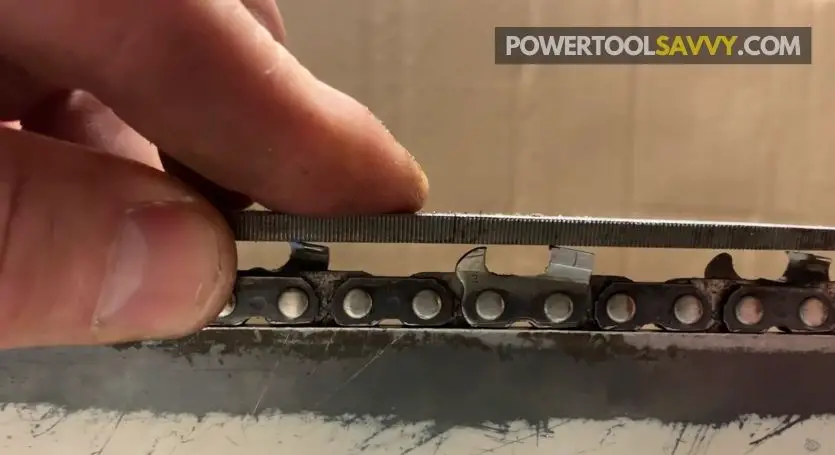
Step 6: Once you’re done, grab your depth gauge tool to ensure all the depth gauges are at the same height. If not, adjust them using the flat file.
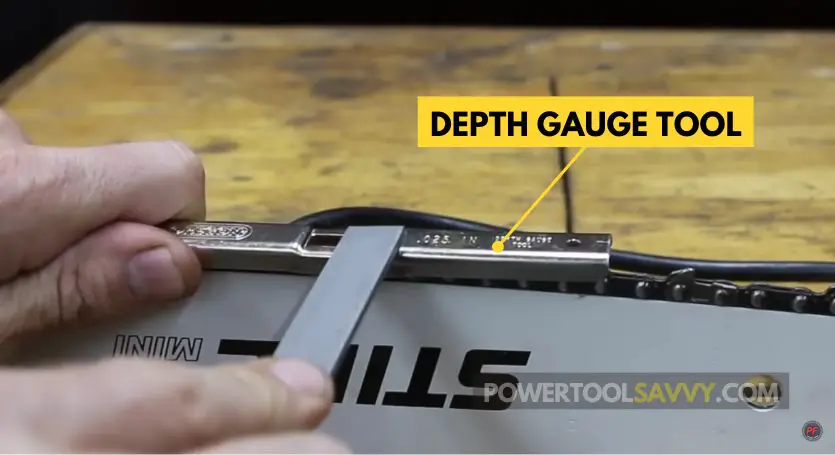
And that’s how you do it!
Be careful! Don’t make these 10 sharpening mistakes.
For a more detailed guide, check out this video: 👇
If you’re still confused or not confident enough to file the chain yourself, you can always get it done by a professional.
(Here’s how much a professional chain sharpening would cost you)
Is It Better to Sharpen or Replace a Chainsaw?
Deciding whether to sharpen or replace your chainsaw chain comes down to the extent of the wear or damage.
If the chain is still in GOOD condition and only requires a quick sharpening, by all means, go for it! It’s typically a cost-effective and efficient choice.
However, if your chain has hit the wear marker or the teeth are so extensively chipped or broken that there’s no hope recovery, the smart move is to replace the chain. 🛒
I’ve got a personal approach to this:
Even when my chains appear to be in rough shape, I like to give them one last shot and sharpen them before throwing in the towel.
Sometimes, the damage isn’t as dire as it seems, and a quick sharpening can work wonders to bring them back to life! 😄🪚
GoodBye Words!
Well, that’s all for this one!
Have FUN, and HAPPY sawing! 🤘🏻😎
(If you’ve got a few minutes to spare, I’d recommend checking out this article: How Often to Tighten a Chainsaw Chain?)

